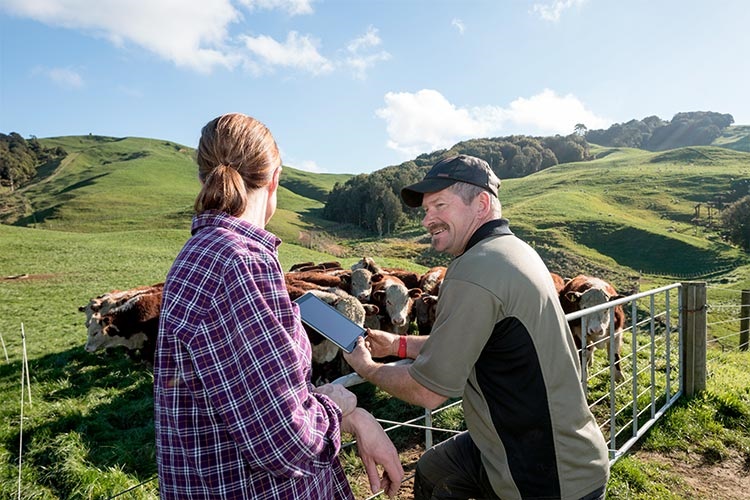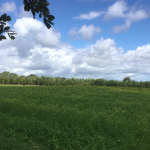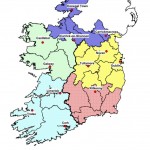Minister Michael Creed T.D. and Minster Eoghan Murphy T.D. launch…
Our Land and Water – innovation and science to underpin new mitigation measures in New Zealand
Enhancing the production and productivity of New Zealand’s primary sector, while maintaining and improving the quality of the country’s land and water for future generations. Ken Taylor tells us about the mission of the Our Land and Water National Science Challenge.
New Zealand’s National Science Challenges emerged from The Great New Zealand Science Project, which in 2012 invited New Zealanders to talk about the biggest science related issues for them. The project resulted in 11 Challenges, set up by the Ministry of Business, Innovation and Employment in early 2016. They are designed to ensure that science investment focuses on areas that matter most to New Zealanders.
Our Land and Water Director Ken Taylor says the Challenges are essentially vehicles to fund and promote collaboration between scientists, researchers, Māori, industry and stakeholders involved in these critical areas.

The Our Land and Water Challenge has a daunting task: to investigate and deliver solutions to help preserve the most fundamental treasures of our country – land, water and associated ecosystems – while still producing economic value from those treasures. Ken believes that currently, New Zealand is operating far below its potential in the economic and environmental spheres. “The current state of many of New Zealand’s soils and freshwater bodies is poor and as a nation we capture and share only a small fraction of what our high-quality products are sold for overseas.”
Obviously, agriculture and food production are very important to New Zealand and while most New Zealanders value primary production, many consider their environmental impacts to be unacceptable. Ken believes the essence of the Challenge is to shift the way we view land and water. “It’s about changing the conversation from farming versus the environment to farming and the environment and finding ways or ideas that create sustainable outcomes”, he says.
Land suitability is a big part of that sustainability equation. “Land suitability is about fitting the activity to the land rather than manipulating the land to fit a predetermined use”, says Ken. “The goal is to adapt the use to the land, not the land to the use.”
“Rather than science taking place in isolation across many research institutions and universities, it’s much better, and more productive in terms of outcomes, if we work collaboratively”.

Building enduring partnerships with Māori so they can play a more active role in the sustainable management and economic development of land and water is a key part of the Challenge.
The Māori title of Our Land and Water is “Toitu te Whenua, Toiora te Wai” which means “Let the permanence of land remain intact– let water abound”. This is an adaption of the Māori proverb, “toitū te whenua, whatungarongaro te tangata” – land is permanent, while people come and go.
“The Māori world view is a holistic approach that seeks to understand the total system, not just parts of it”, says Ken. “We are all part of a very big interconnected system – soil, water, plants, animals, and most importantly, people, all interacting in complicated ways. We want to understand how all of these bits work together, not just the science stuff but, critically, how and why people operate in particular ways and respond to various opportunities and barriers.”
Those opportunities and barriers include the adoption of new technology. As Ken notes, the average time it takes for new technology to be fully adopted in New Zealand and Australia is 16 years. “Intergenerational change is too slow”, he says. “We need intragenerational action. Part of the current lag is because transition pathways are not clear or compelling enough. One of our main aims is to encourage new ways of working and incentivise transition so we can at least halve that adoption time.”

come and go.
“If you assume the land use is right then the next thing is targeting interventions or mitigation. Roughly 80 per cent of farming’s impact on the environment comes from 20 per cent of the farm so let’s focus on that 20 per cent and target the critical source areas. This is not only more cost effective but is likely to deliver the best results”.
Water-use and quality is a hot topic for Kiwis and investigating the way contaminants move through the environment and impact on water quality is another area of interest for the Challenge. There’s been lots of work done on this in New Zealand, but not so much in an integrated or collaborative way. For example, as factors that impact water quality, nutrients (e.g. nitrogen, phosphates) bacteria (e.g. E.coli) and sediment need to be considered together. It’s clear that Our Land and Water has a very wide scope and understanding farming systems and the way farmers think and act is a key factor, which Ken is keen to stress.
“We are committed to working with stakeholders and building partnerships with industry groups (e.g. DairyNZ). But one of most important groups is farmers. Many of the potential benefits can’t be realised without behavioural change and science won’t have all the answers so farmers are hugely important. Only through working together will we create a New Zealand environment we can all be proud of.”
Ken Taylor, Director, Our Land and Water, New Zealand
This article was reprinted with Ken Taylors’ permission. The original article can be viewed at www.fonterra.com/nz/en/our-stories/ articles/using-collaborative-science-to-unlock-our-potential.html







